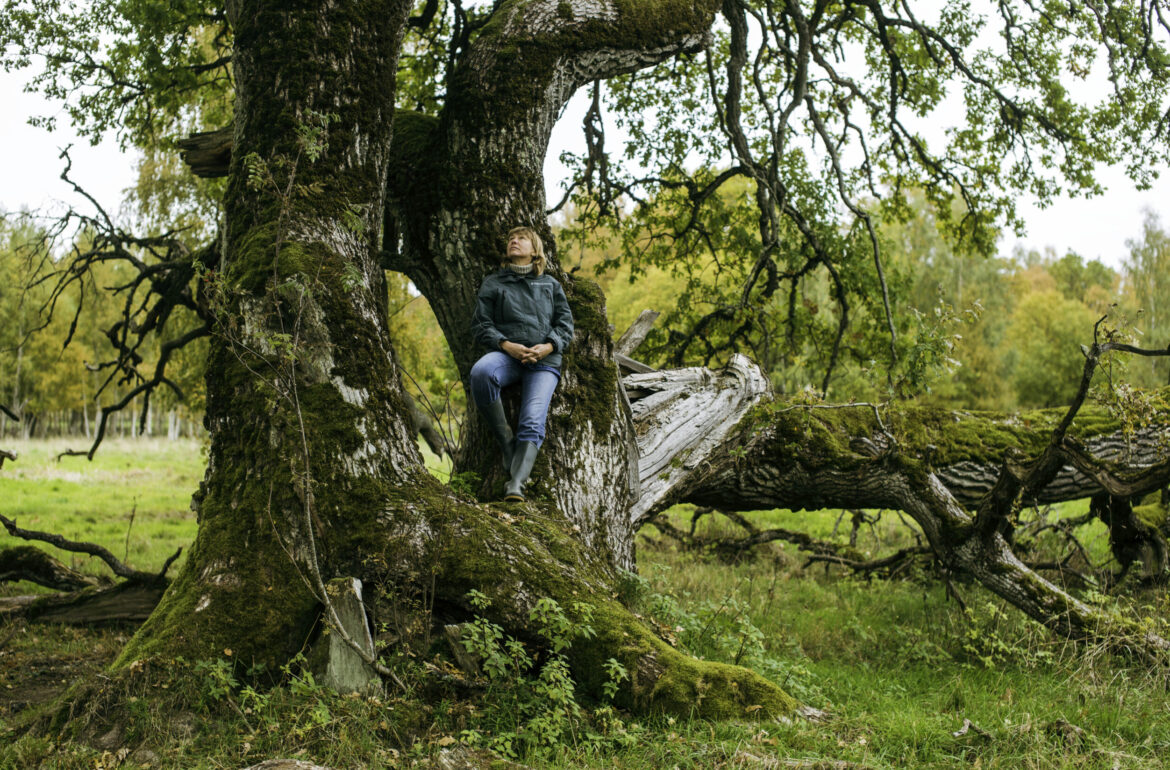Table of Contents
Passion for Amphibians – A Lifelong Journey in Zoology
SERE is the Society for Ecological Restoration Europe, and in the last few days of August, it organized its annual conference at the Estonian National Museum, a sprawling modern structure located on the outskirts of Tartu, Estonia, on the grounds of an old Baltic German estate. Sessions focused on marine, wetland, forest, and grassland restoration; setting new policies and regulations; and the restoration of natural ecosystems, among many other topics.
All of which were of interest to Riinu Rannap, a preeminent Estonian zoologist and associate professor of wetland ecology at the University of Tartu. Rannap has been involved with zoology, and has had a special interest in amphibians and their habitats, since she was a child. As a high school student at the tail end of the Soviet era, she went on class trips to study natural diversity in Central Asia countries like Kazakhstan, Uzbekistan, and Tajikistan, encouraged by a particularly adventurous teacher named Linda Metsaorg, whom she remembers as being “really inspiring.”
But she became crazy about zoology too. “It became clear that it was my only passion,” she said.
In 1990, she received her master’s degree from the University of Tartu, her dissertation focusing on the Natterjack Toad, which is native to the sandy areas of Europe, and is distinguished by a yellow line down its back, as well as a loud mating call (in 2004 Rannap and Estonian naturalist Fred Jüssi released a CD called Frog Songs). In 2009, she received her PhD, focusing on the impacts of habitat loss and restoration on amphibian populations from the University of Tartu.
And her research and conservation activities continue. Among them is an EU project called “Comprehensive management of forest and farming landscapes to improve the conservation status of Natura 2000 habitats and species” or “ForEst&FarmLand,” which commenced in 2021 and will last until 2029 with a €19 million budget. She had a poster from the project at the conference. Below is an edited transcript of the interview with Rannap, which took place there.
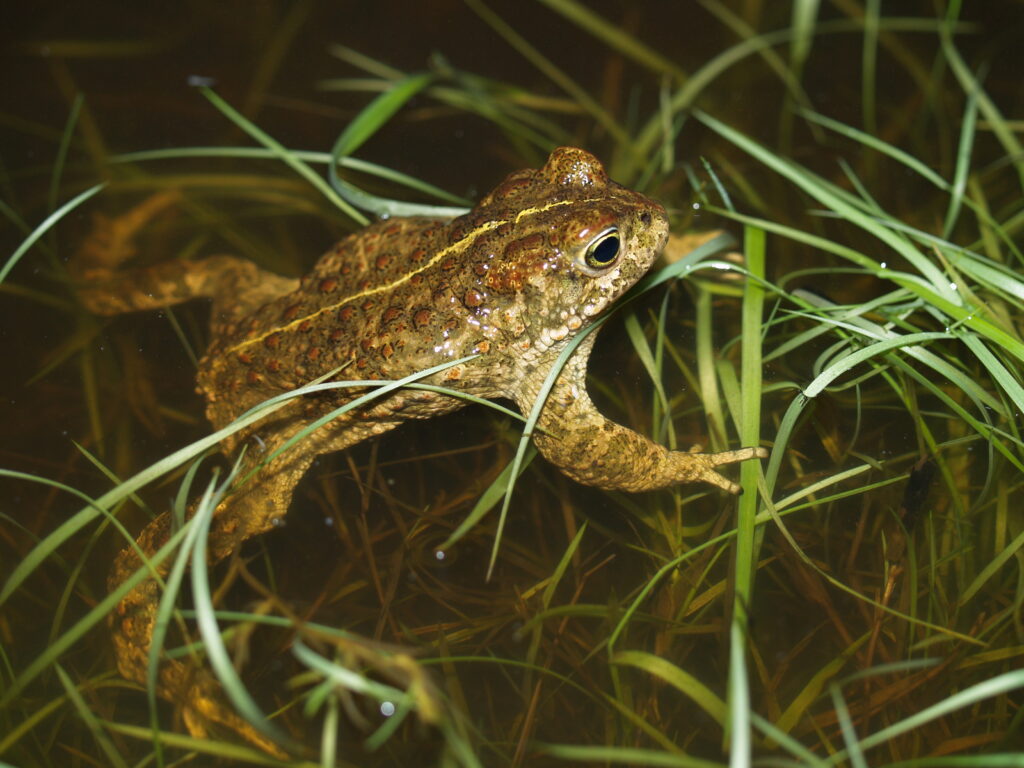
More than half of Estonia is forested, so it surprises me that amphibians are endangered. What is the cause for their population decline?
Very often people think that if there is enough forest, then all is well. But of amphibians in Estonia, the only one that lives in forests is the Northern Crested Newt. All of the rest are species that need open areas, open habitats. The Natterjack Toad is adapted to living in coastal meadows and sand dunes. Today, when you are traveling around in Estonia, you can hardly imagine that we used to have huge dune systems. We had moving dunes in Estonia, but they have been planted with pines. So today, we see pine forests in areas where, in the 1920s and 1930s, there were open sandy areas. Even around Tallinn, we had huge moving sand areas.
We have lost a lot of those habitats. Coastal meadows were once kept open through grazing, as pastures or haymaking areas. These areas were also important for the Natterjack Toad. At that time, one would encounter the Natterjack Toad as often as the Common Toad. They lived in such sandy areas and coastal meadows. There were millions of them.
Land use started to change in the Soviet era. Pollution became a bigger issue, with field runoff from agriculture as well as waste from towns being released straight into waterways, with no protections. So those habitats were lost, not only for the Natterjack Toads but also meadow birds, as they lay their eggs in those areas. They are afraid of forests, they need vast open areas in wetlands. They look for their food in pools and wet areas. So, by the end of the 1990s, we had just 20 populations left of the Natterjack Toad in Estonia, a species that once thrived in the coastal areas of Estonia.
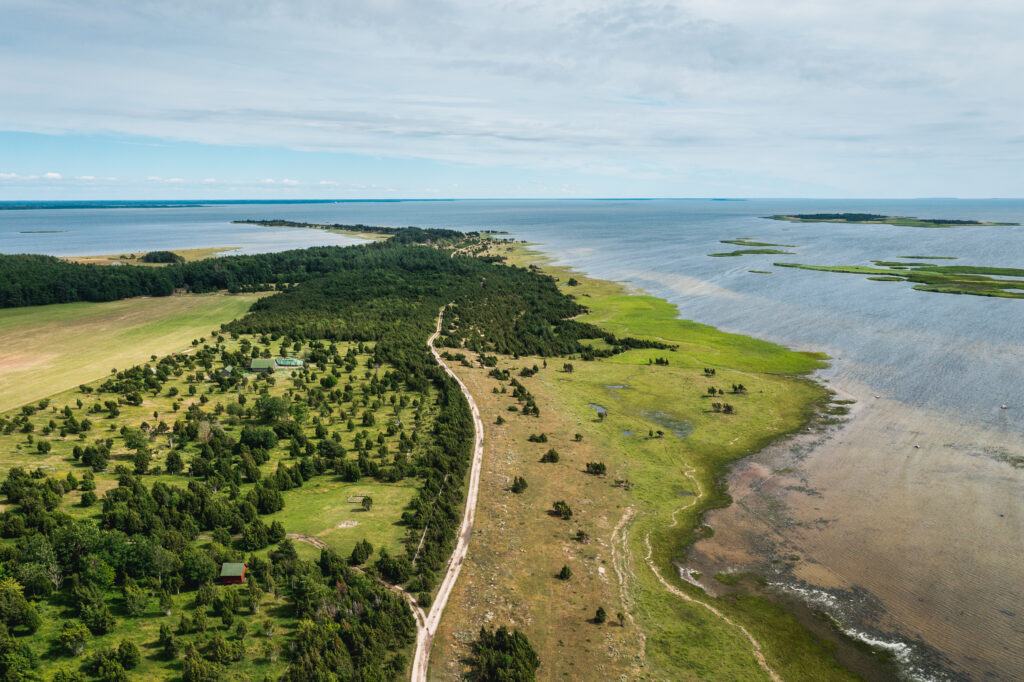
But you have been involved in restoration activities since that time. Is it so simple that one restores the environment and these species return?
In the beginning, we didn’t know what was causing these declines in the Natterjack Toad population. Then I decided to look into the history of what their habitats had been like 50 or 70 years ago, when they were more common. I asked the Estonian Land Board for old aerial photographs and compared them with modern ones. That was a real eye opener. I could see that areas that had scrubland today used to be open pastures or meadows. One meadow complex ran from Pärnu all the way south to the Latvian border. In that way, I could see how their habitats had changed.
We also did some statistics and created some models and could see the main reason for the decline of the Natterjack Toad was the disappearance of wetlands and open areas. By that time, at the end of the 1990s, we had about 17 populations left and they were scattered, not contiguous. I reached out to Danish partners, because they had also done restoration work on amphibians.
They advised us to restore the habitats to the way they used to be. So we started off by restoring depressions in meadows. We also were able to, thanks to an EU project, bring cattle over from Sweden to start grazing the areas where the Natterjack Toad was still present. This restoration has been ongoing since the 1990s.
So we have gained back huge areas of meadows, but the problem is that the Natterjack Toad is gone and is not returning on its own. If we want it back, we need to reintroduce the species. We now are down to 15 populations and they are so far from each other that they are not able to recolonize these reclaimed areas.
How does one do that though? Do you just bring a box of them in and let them go?
No, it’s not so easy. Especially with toads, which live most of their lives in a terrestrial habitat, and go to water bodies for breeding. The rest of their lives are spent in terrestrial habitats. They never adapt to new places. They have a kind of GPS in their head. If we put them in a restored habitat, they will start to look for certain stones or loughs, landmarks that are in their heads.
When they leave the water after being a tadpole they start to make these kinds of maps. And if you take an adult away from its habitat and put it into a new place, it goes crazy. It keeps looking for landmarks it knows. The only way to reintroduce them is to take tadpoles from pond to pond. There is a Natterjack Toad rearing center in Matsalu National Park in western Estonia. So we take tadpoles from populations, grow them in the rearing center, and then release those toadlets into the new locations. This work is ongoing.
How are animals protected in Estonia?
They are protected by the Nature Conservation Act. All amphibians in Estonia are protected. There are different categories. The Natterjack Toad and Green Toad are in Category 1, which is the strongest. This means that all known habitats of these species must be protected in a nature conservation area or special species area. The Northern Crested Newt and Common Spadefoot Toad are Category 2 species. This protection is less habitat linked. All of the other amphibians are Category 3, which receives the least amount of protection.
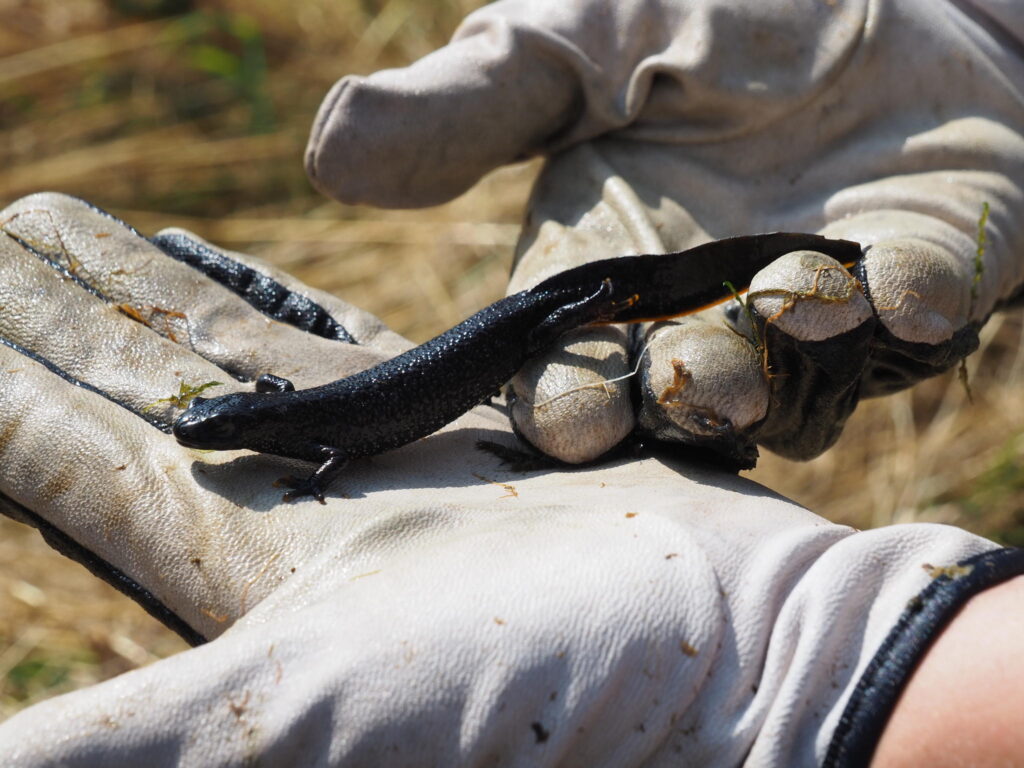
Do you feel that protection of species is well enforced? Is the state doing enough?
No, I could even say that it is ridiculous to just protect a species. You need to protect their habitats. It doesn’t help to not step on a toad once its habitat is gone. Only if the habitat is in good shape can they reproduce. But in Estonia, thanks to forest drainage and the intensification of agriculture, certain situations have developed.
We have terrestrial habitats, but we are missing wetlands, small water bodies, depressions where amphibians can breed. The breeding grounds are in bad shape. Most amphibians cannot survive in the same waters as fish, because fish eat most of their tadpoles. It’s very complex. To just say you protect a species is nonsense, really. You need to protect their habitats, those wetland complexes.
What else are you working on at the moment?
I just finished up a transcrip related to the Natterjack Toad. Now that we have restored their habitats for 20 years, we have a good data set, which includes 16 years of data on the state of their habitats and the numbers of egg strings. Based on the number of egg strings, one can say how many productive females there are in the population. Originally, there was no habitat restoration at all, then it was done at a small scale — by cleaning up existing breeding ponds, for example. Then we started to cut down the pine plantations, reopen the dune systems, and clean up the depressions where they used to breed. After that, the toad population started to increase.
Many people, even biologists, had said that maybe time was up for the Natterjack Toad. They said that it would go extinct, and considered this to be a natural development. But if you take away the habitat of a species, it will go extinct. When you provide it back its habitat complex, the species will rebound. We cannot say that time is up for the Natterjack Toad. When we decide to restore these habitats, the species will respond accordingly.
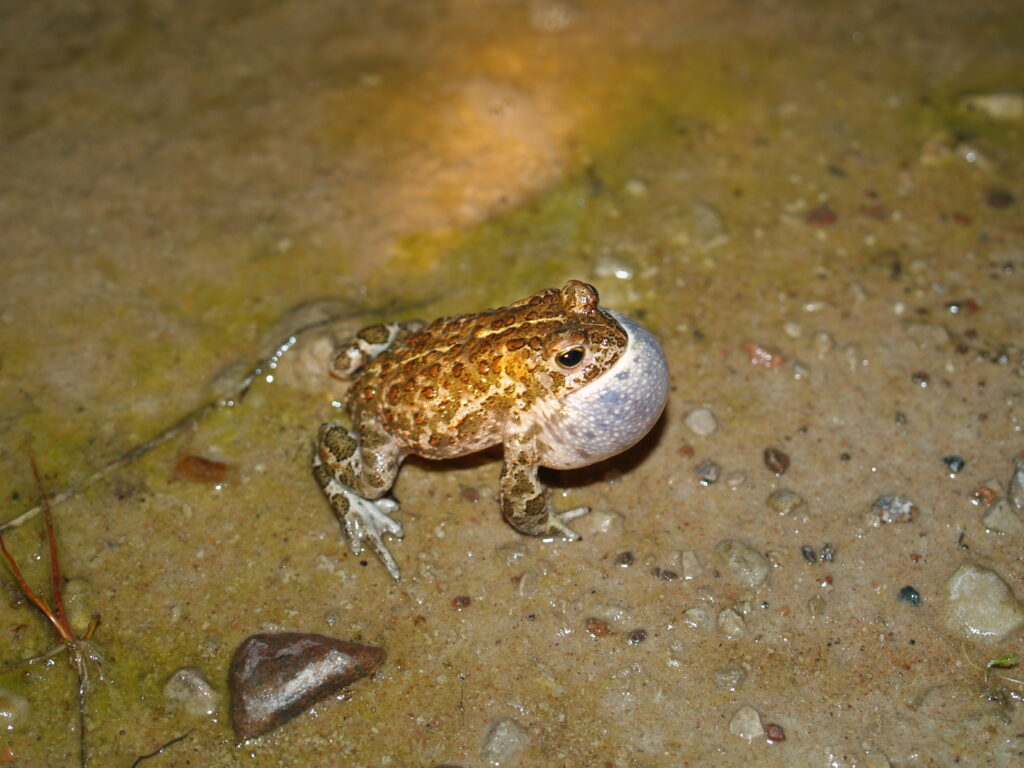
You have a poster at this conference about the ongoing EU Project, ForEst & Farmland, where you discuss the link between coastal meadow restoration, and waders or shorebirds, and the Baltic Dunlin in particular. What can you tell me about this poster?
These birds are adapted to live in coastal meadows, the higher parts of which have been planted with pines. Today, meadow management is subsidized by the EU, and we have a lot of cattle grazing there, but we have seen that even if the meadows are well managed, the bird populations have not been responding. Their decline has instead continued.
So we have studied this further. The Dunlin is avoiding meadows that are narrow or scattered. They will not breed if the edge of the forest is closer than 200 meters. For these birds, the presence of forest means predators, because foxes live in the forests. We have used tracking cameras installed near birds’ nests, and can also see that foxes avoid large open areas, because they have their own predators, like eagles.
Foxes don’t feel safe in open, empty places. In the case of our coastal meadows though, there are often islands of forests, so foxes can run between these islands, feeding at the birds’ nests in between. So waders tend to avoid scattered meadows. With this project, we have tried to remove these planted forest islands and to enlarge the meadows. We have agreements in place with owners to allow their livestock to graze there.
What is interesting is that the coastal meadows recovered within two years of doing this. Even though pines had existed on this soil for maybe 60 years, the seed bank was still present. When we removed the pine scrub, the meadow plants restored themselves. Within two years, you can’t even tell that there used to be forest there. The birds have reacted well to these meadows.
This article is written by Justin Petrone. This article was funded by the European Regional Development Fund through Estonian Research Council.
If the fight to save endangered species stirs your passion, don’t stop here—join us in our next article to explore the efforts being made to protect the planet’s most vulnerable creatures before it’s too late. Read more about how The diversity of endangered bird species cannot be replaced by introduced species!
 Back
Back